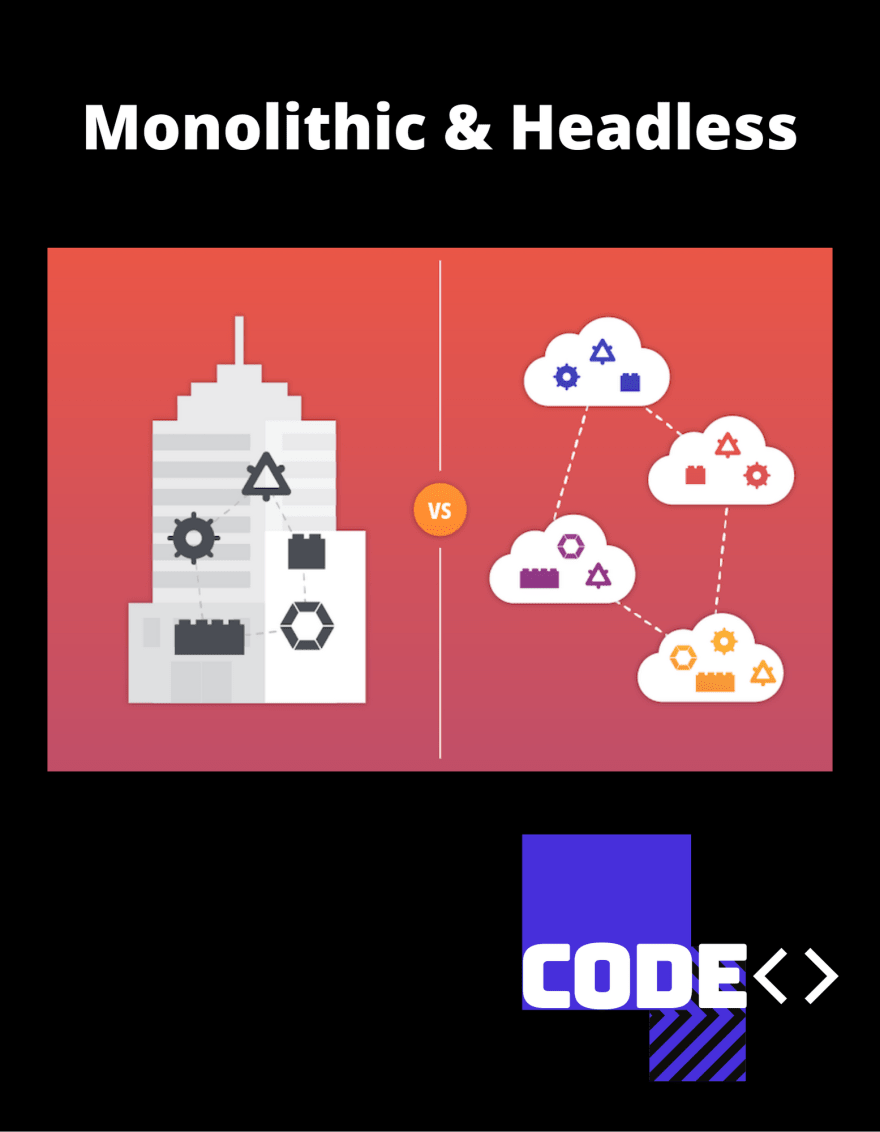Monolithic applications are applications that are running on the same server and all the calls it makes are local. While headless applications are applications that have the front-end separated from the back-end, thus allowing to remove the server overhead.
It is not appropriate to say that one is being used more than the other, in what I have been working as a developer, the 2 types of systems are very required since large monolithic platforms allow faster development, for clients who are only looking for a website or a Simple e-commerce, based on templates, but on the other hand there are also clients who need more robust web applications and who require headless systems for higher performance.
Monolithic Systems
In this case, the frontend and the backend are closely linked and inseparable. The monolithic CMS interface accesses content from a backend database, and then this content is used within the website design. By default, from a design and presentation perspective, all content is transferred to the platform.
Headless Systems
The term 'headless' comes from the concept of cutting off the 'head' (the front-end, that is, the website or application) from the 'body' (the back-end, that is, the content repository, the database, etc.). Therefore, a headless CMS is a back-end only CMS built from the ground up as a content repository that delivers database content (SQL and NoSQL) and files to any platform or device via API.
A headless CMS remains with an interface to manage content and a RESTful or GraphQL API to deliver content where you need it. The main focus of the Headless CMS is to store and deliver structured content and allow content publishers to collaborate on new content. In a headless CMS, the responsibility for the presentation and design of the content is given to the distribution channels. Due to this approach, a headless CMS doesn't care about how and where its content is displayed. Allow each channel to represent content in its own individual way.
Differences
There are a number of differences between monolithic systems and a headless system, including:
- Monolithic systems have many built-in features that not all clients need.
- A headless platform gives you access to entities, examples of these are pages, menus, products, blogs, people, etc. Entities are the base objects that you can later modify and enhance according to your requirements.
- Monolithic systems are more focused on providing solutions to the end customer than to the developer. The Core dna platform strikes a balance between the development environment and the management environment.
- Headless platforms in many cases do not come with end-customer management tools. Core dna continues to provide easy-to-manage tools within our headless platform.
- Accessing the information in a monolithic system can be difficult.
- Monolithic systems require infrastructure and security tools to be in place for them to work.
- Monolithic systems can take time to learn and understand how they work.
- Headless platforms allow you to create your own publishing environments.




Top comments (0)